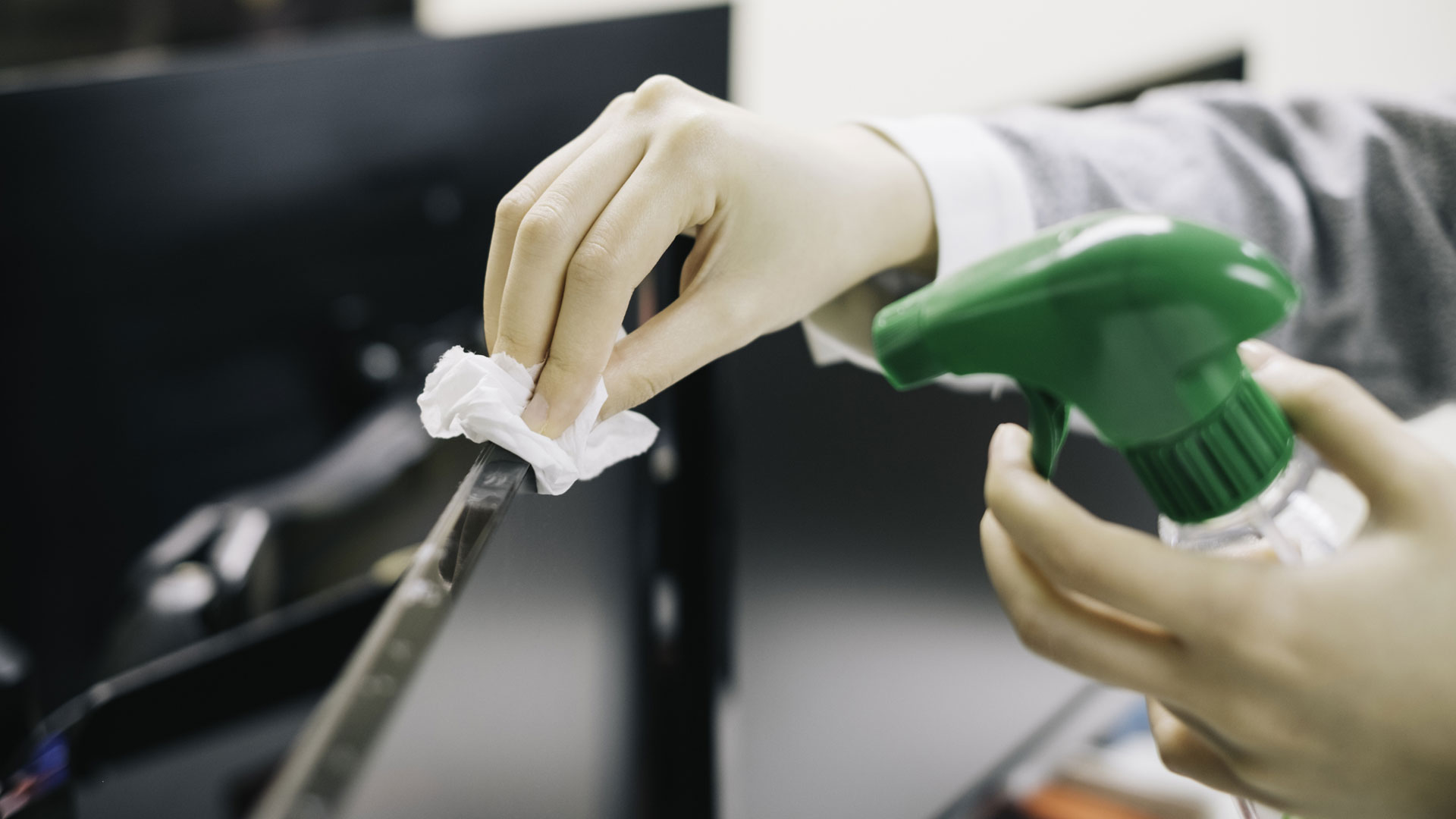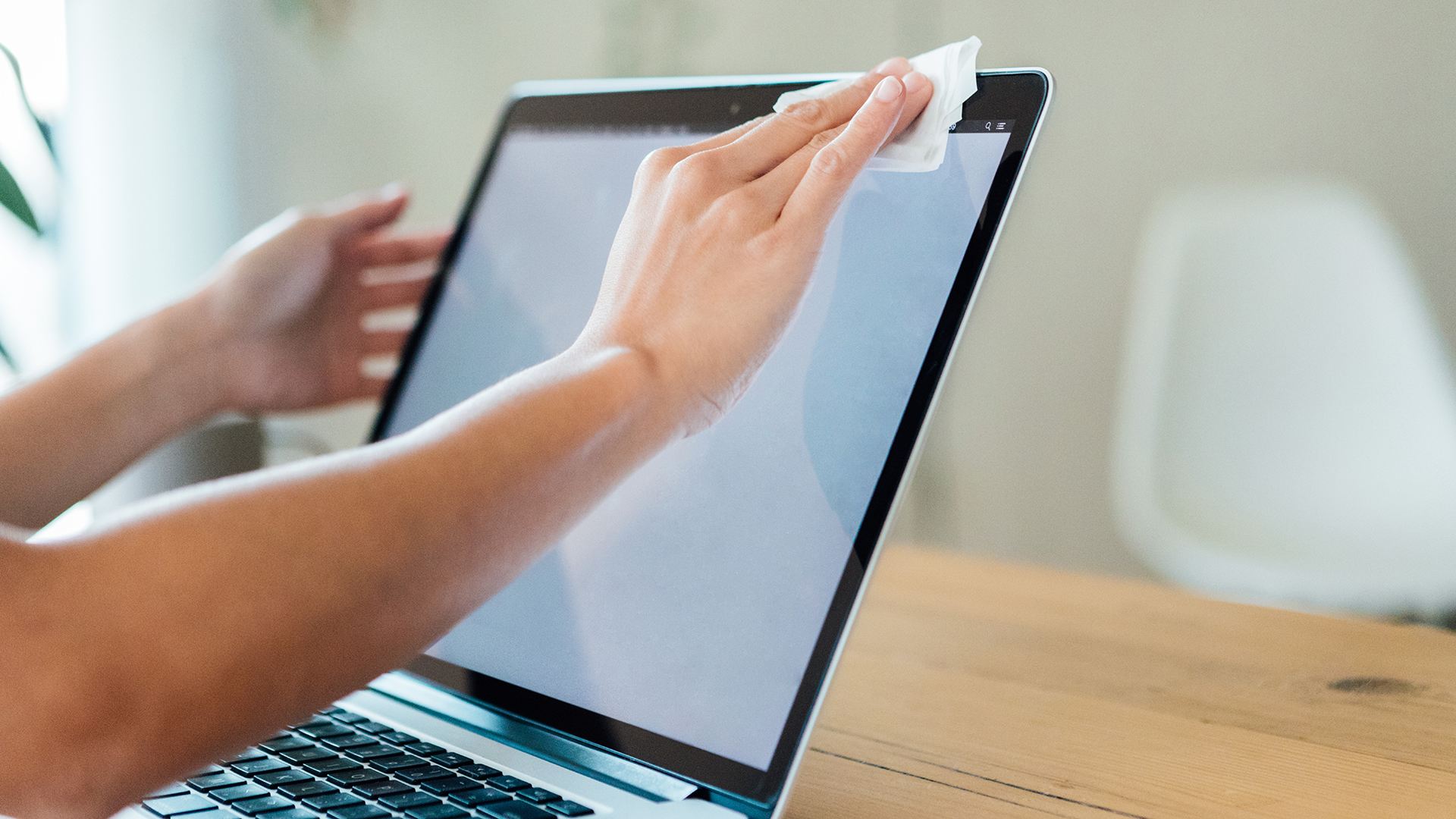You may be wondering how best to clean a monitor screen, especially if you, like so many others, have been working from home for a while and are now returning to your place of work.
Between the build-up of dust, to the occasional fingerprints smudges, it can be tricky to know what cleaning products to use (if any) and what type of cloth will prevent scratches all over your display. After all, we wouldn't want the experience of using the best home computers to be spoiled by an unsightly monitor screen.
Thankfully, we’ve got you covered, with useful tips on how to clean a monitor screen. Many of these can be applied when it comes to cleaning a screen on the best laptops and the best touch screen monitors too.
How to clean a monitor screen
Before you begin
Firstly, you’ll need the following to give your monitor a thorough clean:
- A microfiber cloth (or monitor dusting wipes)
- Distilled water
Secondly, it’s best to turn the monitor off and unplug it. This not only protects you from any electrical current, but it can protect the monitor in case an errant drop of cleaning product finds its way in – plus when a monitor is off, the screen shows dust and other build-up more easily.

How to clean a monitor screen
Step 1: Use a dry microfiber cloth in a circular motion to gently clean the display. Using something like a towel can result in scratching because you never know what could be hidden within the fibers – and you’re essentially pushing it into the display glass.
The microfiber cloth is your best bet, but you can use monitor dusting wipes. These usually have a recommendation on the packaging for the types of monitor they're best for, so be sure to check that before proceeding.
Step 2: Now that your cloth has picked up the majority of the dust, you’ll be able to dampen it with distilled water. Why distilled? Tap water is more commonly available, but it can leave marks on the screen from mineral deposits.
We cannot stress enough that you should steer clear of anything alcohol-based when cleaning your screen. That’s because it can have a corrosive effect that’ll eat through your display’s finish.
Much like with the monitor dusting wipes we mentioned before, you can find more specialized screen cleaning fluid. As with the wipes, though, it’s best to check the packaging before using it.
It’s worth noting that the cloth doesn’t need to be soaked, just a little damp. Anything more than a damp cloth could drip water into your electronics, so be very conservative with the amount of water or fluid you use.
Step 3: Avoiding broad strokes, gently wipe the screen with the dampened microfiber cloth. The cloth is likely to pick up more dirt, so be ready to dampen it again when cleaning it off. If you do use cleaning fluid, avoid applying it directly to the screen. It can feel like a quicker way of doing things, but it’s not great for the monitor’s long-term health.
You can clean the bezel and stand of a monitor in much the same way as the display – but you don’t have to be quite so gentle. Still, be sure to apply any liquid to the cloth, not the bezel.
Step 4: Leave the monitor to dry for a period, or use a second, dry microfiber cloth to gently clean the display and surrounding areas. Don’t turn the monitor back on completely until dry to minimize the possibility of electric shocks.
Additional tips
If you have a persistent stain on a screen (a splash of coffee, for example), it’s recommended that you mix water and white vinegar together (1:1 mix ratio). This can then be added to your cloth and you can gently rub it away.
As noted before, there’s no part of the process where you need to apply any cleaning product directly to the monitor itself. Everything should go on your microfiber cloth or your wipe of choice.
Discover more tech guides…
Best keyboards for home office
Best webcams
Best compact printers

